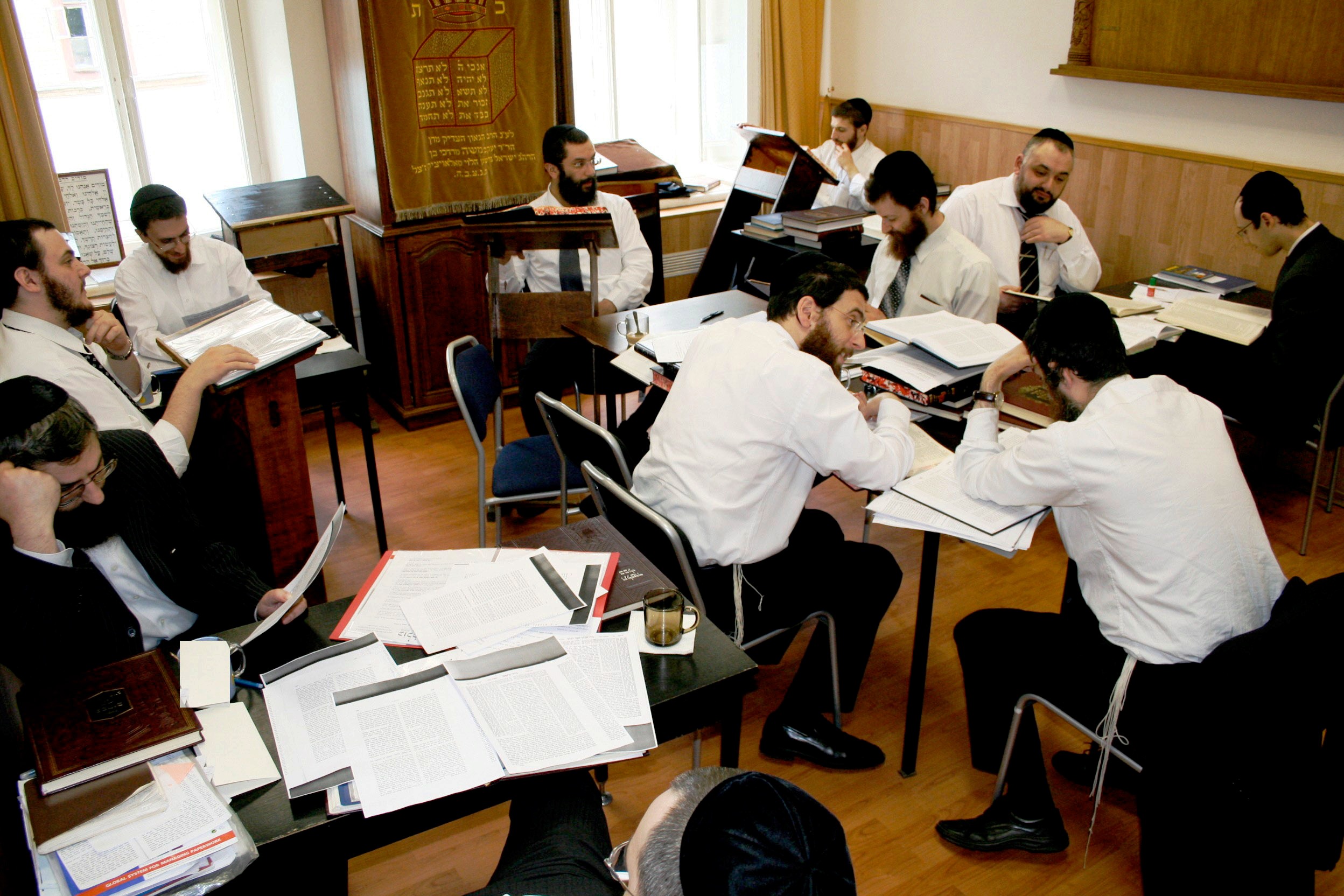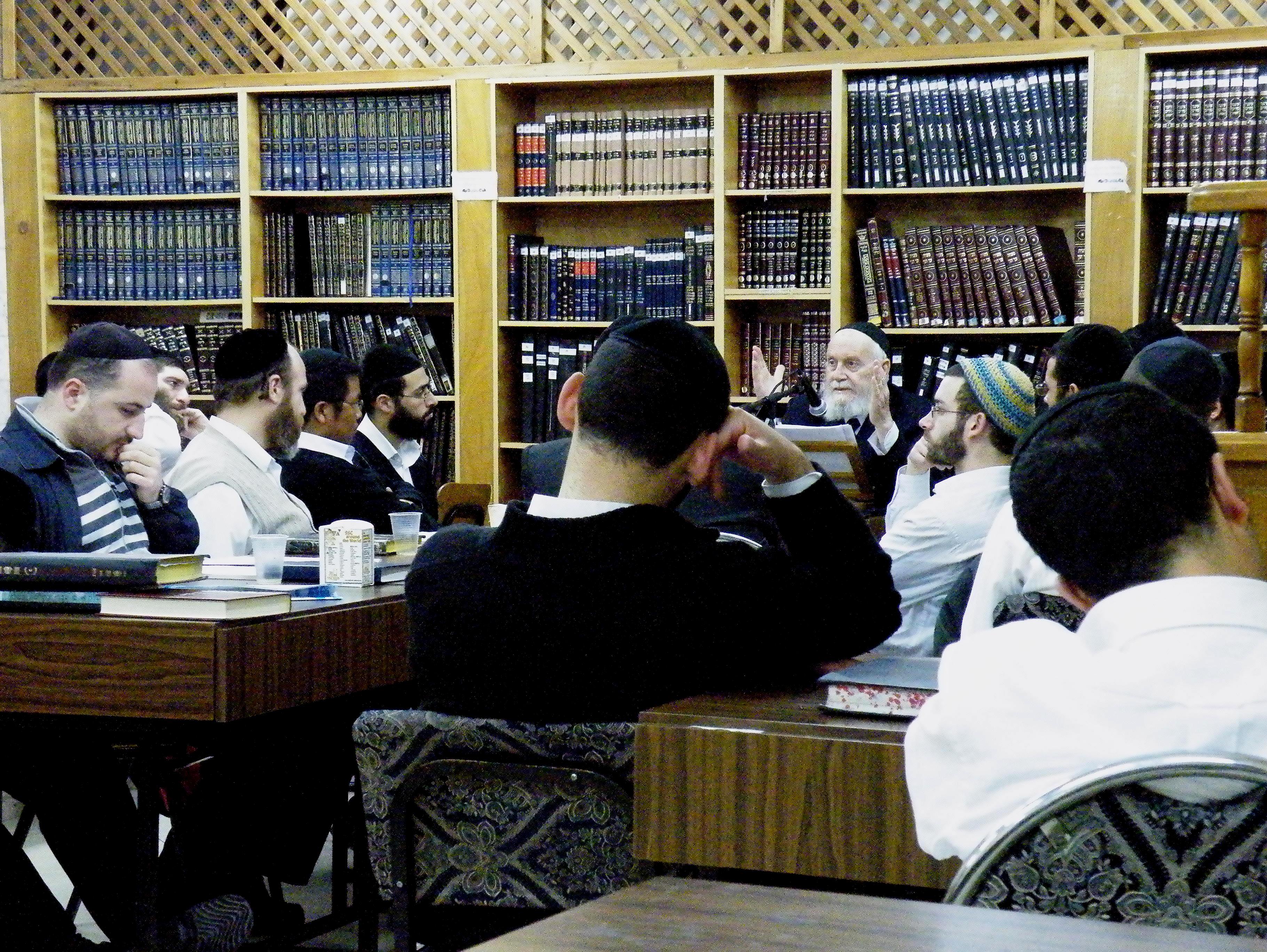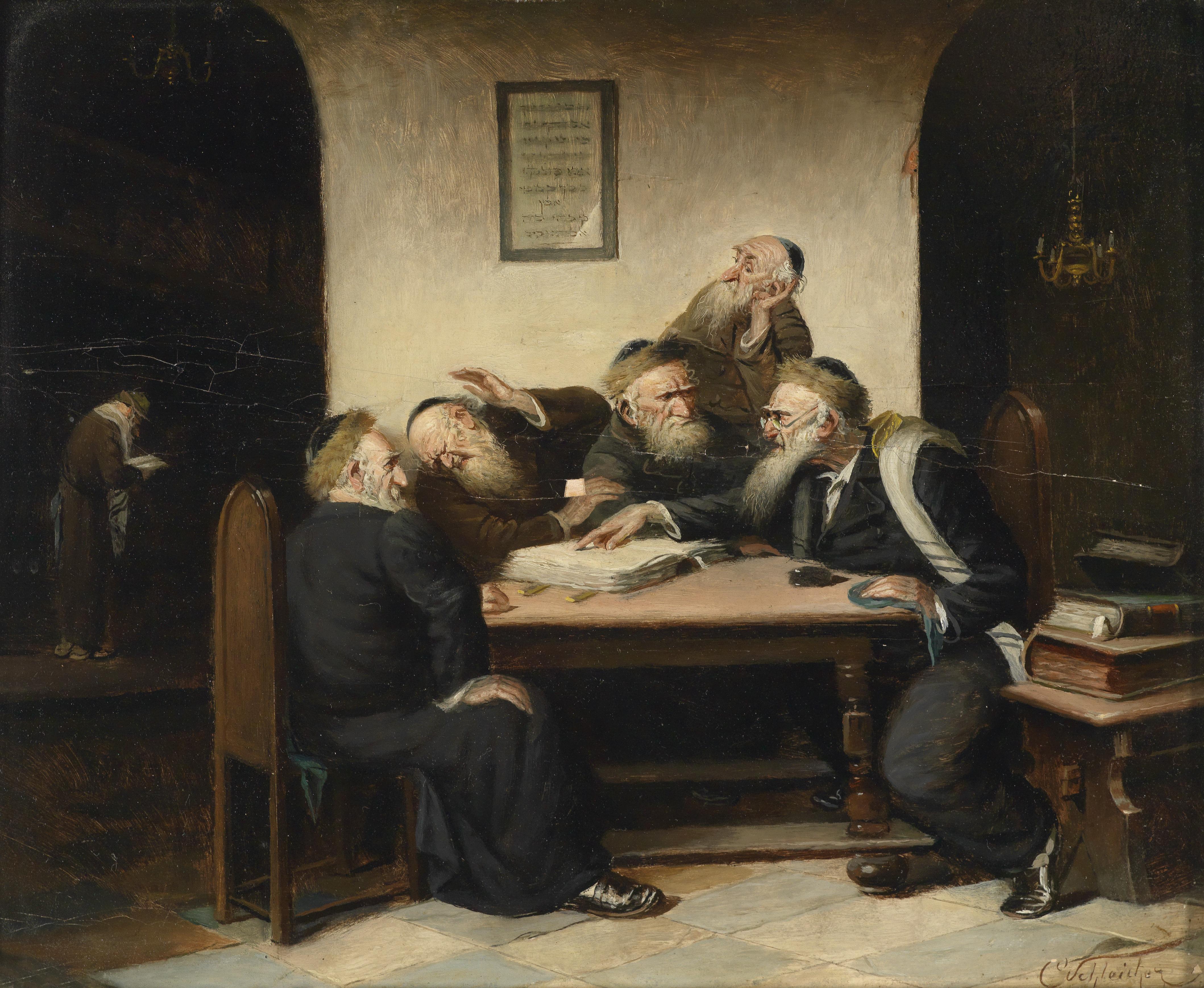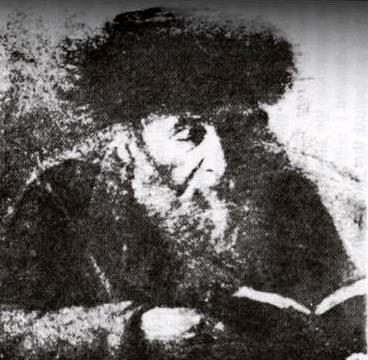|
Kollel
A kollel (also kolel) (, , , , a "gathering" or "collection" [of scholars]) is an institute for full-time, advanced Torah study, study of the Talmud and rabbinic literature. Like a yeshiva, a kollel features Shiur (Torah), shiurim (lectures) and learning ''sedarim'' (sessions); unlike most yeshivot, the student body of a kollel typically consists mostly of married men. A kollel generally pays a regular monthly stipend to its members. History Original sense Originally, the word was used in the sense of "community". Each group of European Jews settling in Israel established their own community with their own support system. Each community was referred to as the "kollel of " to identify the specific community of the Old Yishuv. The overwhelming majority of these Jews were scholars who left their homelands to devote themselves to study Torah and serve God for the rest of their lives. The kollel was the umbrella organization for all their needs. The first examples were Kolel Perush ... [...More Info...] [...Related Items...] OR: [Wikipedia] [Google] [Baidu] |
Kolel Vilna Zamość
A kollel (also kolel) (, , , , a "gathering" or "collection" f scholars is an institute for full-time, advanced study of the Talmud and rabbinic literature. Like a yeshiva, a kollel features shiurim (lectures) and learning ''sedarim'' (sessions); unlike most yeshivot, the student body of a kollel typically consists mostly of married men. A kollel generally pays a regular monthly stipend to its members. History Original sense Originally, the word was used in the sense of "community". Each group of European Jews settling in Israel established their own community with their own support system. Each community was referred to as the "kollel of " to identify the specific community of the Old Yishuv. The overwhelming majority of these Jews were scholars who left their homelands to devote themselves to study Torah and serve God for the rest of their lives. The kollel was the umbrella organization for all their needs. The first examples were Kolel Perushim (students of the Viln ... [...More Info...] [...Related Items...] OR: [Wikipedia] [Google] [Baidu] |
Yeshiva
A yeshiva (; ; pl. , or ) is a traditional Jewish educational institution focused on the study of Rabbinic literature, primarily the Talmud and halacha (Jewish law), while Torah and Jewish philosophy are studied in parallel. The studying is usually done through daily '' shiurim'' (lectures or classes) as well as in study pairs called '' chavrusas'' ( Aramaic for 'friendship' or 'companionship'). '' Chavrusa''-style learning is one of the unique features of the yeshiva. In the United States and Israel, different levels of yeshiva education have different names. In the U.S., elementary-school students enroll in a '' cheder'', post- bar mitzvah-age students learn in a '' mesivta'', and undergraduate-level students learn in a '' beit midrash'' or '' yeshiva gedola'' (). In Israel, elementary-school students enroll in a Talmud Torah or '' cheder'', post-bar mitzvah-age students learn in a ''yeshiva ketana'' (), and high-school-age students learn in a ''yeshiva gedola''. ... [...More Info...] [...Related Items...] OR: [Wikipedia] [Google] [Baidu] |
Kovno Kollel
Kovno Kollel also known as Kollel Perushim of Kovno or Kollel Knesses Beis Yitzchok, was a ''kollel'' located in Kaunas, Lithuania. It was founded in 1877 by Rabbi Yisrael Lipkin Salanter when he was 67. Kovno Kollel's purpose was the furtherance of ''hora'ah'' (expertise in deciding matters of Jewish law) and '' musar'' - by supporting and guiding exceptional Torah scholars in their development as authorities. History In 1877, Rabbi Yisroel ben Ze’ev Wolf Lipkin – also known as Yisroel Salanter – founded a Kollel (a yeshiva for young, mostly married, men) in the city of Kaunes (Kovno), Lithuania. The Kollel taught the non-Hasidic Orthodox Musar movement (of which Lipkin was the founder) that sought to emphasize ethical conduct and spiritual devotion. The project was approved by, and eventually named for, Yitzchak Elchanan Spektor, the rabbi of Kovno. When the Nazis invaded and occupied Kovno, the Kollel students were murdered like most of the city’s Jewish reside ... [...More Info...] [...Related Items...] OR: [Wikipedia] [Google] [Baidu] |
Shiur (Torah)
A shiur (, , ; , ) is a lecture given any Torah-related topic of Torah study, study, such as Gemara, Mishnah, ''Halakha'' (Jewish law), or Tanakh (Hebrew Bible), usually given in a yeshiva, though commonly in other Jewish communal settings. History The Hebrew term שיעור ("designated amount") came to refer to a portion of Judaic text arranged for study on a particular occasion, such as a Bereavement in Judaism#Annual remembrances, yahrzeit, the dedication of a new home, or the evening of a holiday, and then to a public reading and explanation of the same. The act of teaching and studying these texts at the designated time was known as ''shiur lernen'' (); by synecdoche, the act itself became known as ''shiur''. These shiurim would be attended by all classes of people; it was traditional for learned attendees to engage the lecturer in continuous discussion, and for the larger lay audience to listen intently. Concurrently, in the yeshiva-setting it came to refer to ... [...More Info...] [...Related Items...] OR: [Wikipedia] [Google] [Baidu] |
Old Yishuv
The Old Yishuv (, ''haYishuv haYashan'') were the Jewish communities of the Land of Israel during the Ottoman period, up to the onset of Zionist aliyah waves, and the consolidation of the new Yishuv by the end of World War I. Unlike the new Yishuv, characterized by secular and Zionist ideologies promoting labor and self-sufficiency, the Old Yishuv primarily consisted of religious Jews who relied on external donations ('' halukka'') for support. The Old Yishuv evolved following a significant decline in Jewish communities across the region during late antiquity and the early Middle Ages, and was composed of three clusters. Firstly, Ladino-speaking Sephardic Jewish communities settled in the region during the late Mamluk and early Ottoman periods, alongside Arabic-speaking ''Musta'arabi'' communities, who had already been living there since before the coming of Islam and had been culturally and linguistically Arabized. Secondly, Ashkenazi Jews emigrated from Europe in the 18th ... [...More Info...] [...Related Items...] OR: [Wikipedia] [Google] [Baidu] |
Beth Medrash Govoha
Beth Medrash Govoha (, pronounced: ''Beis Medrash Gavo'ha''. lit: "High House of Learning"; also known as Lakewood Yeshiva or BMG) is a Haredi Jewish Litvishe ''yeshiva'' in Lakewood Township, New Jersey. It was founded by Rabbi Aharon Kotler in 1943 and is the second-largest yeshiva in the world, after Mir Yeshiva in Jerusalem. As of 2025, it had over 9,000 students, between bochurim ( unmarried members) and married with Kollel status.Fiscal data state.nj.us The principal since 1982 is Rabbi Malkiel Kotler. |
Kolel Shomrei HaChomos
Kollel Shomrei haChomos () is a financial charity institute or ''kollel'' set up to support the community of Hungarian-Jews who emigrated to the Holy Land, hence it is called by many the ''Hungarian Kollel''. The Hungarian Jews separated themselves in 1858 from its mother institute Kolel Chibas Yerushalayim which at one point in time included the Jewish communities of the entire Austrian Hungarian Kingdom. Kolel Chibas Yerushalayim was itself a breakaway from the original Kolel Perushim, established by the students of the Vilna Gaon. Two leading Hungarian rabbis were appointed as the "Nesyim" or "Presidents of the Kolel, Avraham Shmuel Binyamin Sofer, author of Ketav Sofer, and Meir Eisenstein. In honor of these two leaders the Hungarian Kolel was also called "House of Sofer and Meir" History By the year 1881 the ''kollel'' had built up many apartment buildings to provide housing for its members. This was accomplished in great part thanks to donations by Rabbi Yitzchok Zvi Rat ... [...More Info...] [...Related Items...] OR: [Wikipedia] [Google] [Baidu] |
Torah Study
Torah study is the study of the Torah, Hebrew Bible, Talmud, responsa, rabbinic literature, and similar works, all of which are Judaism's Sifrei kodesh, religious texts. According to Rabbinic Judaism, the study is done for the purpose of the ''mitzvah'' ("commandment") of Torah study itself. This practice is present to an extent in all religious branches of Judaism, and is considered of paramount importance among religious Jews. Torah study has evolved over the generations, as lifestyles changed and also as new texts were written. Traditional view In rabbinic literature, a heavy emphasis is placed on Torah study for Jews, Jewish males, with women being exempt. This literature teaches an eagerness for such study and a thirst for knowledge that expands beyond the text of the Tanakh to the entire Oral Torah. Some examples of traditional religious teachings: * The study of Torah is "equal to all" of the ''Mitzvah, mitzvot'' of Honour thy father and thy mother, honouring one's pare ... [...More Info...] [...Related Items...] OR: [Wikipedia] [Google] [Baidu] |
Aharon Kotler
Aharon Kotler (February 2, 1892 – November 29, 1962) was a Haredi (ultra-Orthodox) rabbi and a prominent leader of Orthodox Judaism in Lithuania and in the United States, where he founded Beth Medrash Govoha in Lakewood Township, New Jersey. Early life Kotler was born Aharon Pines in Śvisłač, Russian Empire (historically Lithuania, now Belarus) in 1892. He was orphaned at the age of 10 and adopted by his uncle, Yitzchak Pines, a rabbinic judge in Minsk. He studied in the Slabodka yeshiva in Lithuania under Nosson Tzvi Finkel, and Moshe Mordechai Epstein. Career Kotler joined his father-in-law, Isser Zalman Meltzer, in running the yeshiva of Slutsk. After World War I, the yeshiva moved from Slutsk to Kletsk in Belarus. With the outbreak of World War II, Kotler and the yeshiva relocated to Vilna, then the major refuge of most yeshivas from the occupied areas. The smaller yeshivas followed the lead of the larger ones, and either escaped with them to Japan and China, ... [...More Info...] [...Related Items...] OR: [Wikipedia] [Google] [Baidu] |
Kolel Chibas Yerushalayim
Kolel Chibas Jerusalem (), one of the numerous charities known as Charity of Rabbi Meyer Ba'al Ha-Nes — named after the great 2nd century Jewish sage Rabbi Meir — is a kollel, a large charitable organization based in Jerusalem's Meah Shearim neighbourhood and which supports Jews who have emigrated to the Holy Land from Galicia, a historical geographical region spanning southeastern Poland and western Ukraine, formerly part of the Austro-Hungarian empire. History Founding The organization was established in 1830 by Jews from Galicia, Austrian Empire, to support full-time Torah students of the Yishuv haYashan. From the outset, the organization received wide support in the Galician Jewish community, with the rabbis of Sanz, Ropshitz, Dinov, and Belz actively involved in fundraising. Small charity boxes were distributed to many Jewish homes. Families would donate however much they could, even it were only a few coins. A few times a year a local representative gabbai woul ... [...More Info...] [...Related Items...] OR: [Wikipedia] [Google] [Baidu] |
Yitzchak Blazer
Yitzchak Blazer (Hebrew: יצחק בלאזר) (1837–1907) was an early important leader of the Musar movement. He is also sometimes referred to as Rav Itzele Peterburger due to his position as Chief Rabbi of St. Petersburg at a time when it was the capital of Russia. he married the mother of the Lomza rav R Moshe Shatskesz when his father was niftar becoming the stepfather of R Moshe Shatskesz Moshe Shatzkes Background Blazer was a student of Rabbi Yisroel Salanter, founder of the Musar movement, under whose direction he was appointed Chief Rabbi of St. Petersburg at the age of 25. Career Among Blazer's accomplishments, in addition to his own authorship of ''Pri Yitzchak'', a halakhic responsa text, was the publishing of many of Salanter's letters in ''Or Yisrael'' ("The Light of Israel"), as well as articles on Musar, Teshuvah, and the life of his teacher, Rav Yisrael Salanter. He also authored ''Kochvei Ohr''. From 1880 to approximately 1891, he served as the he ... [...More Info...] [...Related Items...] OR: [Wikipedia] [Google] [Baidu] |
Kolel Perushim
The ''perushim'' () were Jewish disciples of the Vilna Gaon, Elijah ben Solomon Zalman, who left Lithuania at the beginning of the 19th century to settle in the Land of Israel, which was then part of Ottoman Syria. They were from the section of the community known as ''misnagdim'' (opponents of Hasidic Judaism) in Lithuania. They were part of the Old Yishuv. The name ''perushim'' comes from the verb ''parash'' "to separate". The group sought to separate themselves from what they saw as the impurities of the society around them in Europe. Coincidentally this was the same name by which the Pharisees of antiquity were known. However the latter-day ''perushim'' did not make any claim to be successors of the Pharisees. Influenced by the Vilna Gaon, who had wanted to go to the Land of Israel but was unable to do so, a large group of his ''perushim'' disciples and their families, numbering over 500, with a few dozen younger earlier scouts, were inspired to follow his vision. Enduring ... [...More Info...] [...Related Items...] OR: [Wikipedia] [Google] [Baidu] |






